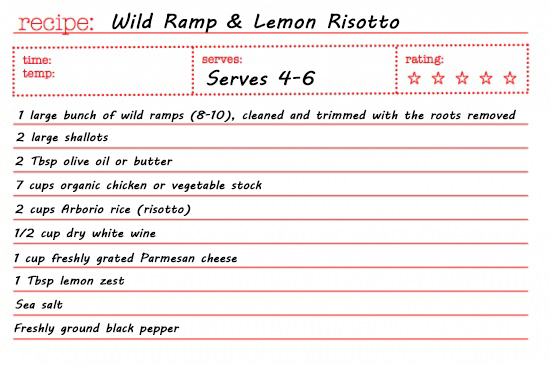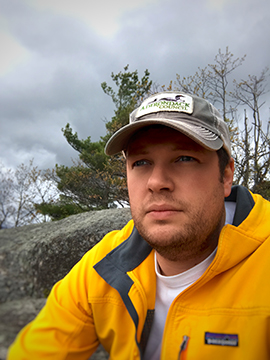May 10, 2017
by: Tyler Frakes – Adirondack Council Membership Director
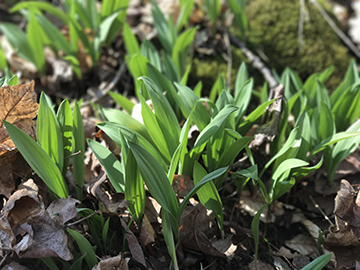 In the Adirondacks, spring has just hit full stride. Various wildflowers, from Bloodroot, Dutchman’s Breeches and Trilliums litter the forest floor with tender shoots and colorful blossoms. A time of rebirth and reawakening for many plants and animals, spring offers much more than just an eye-pleasing floral delight.
In the Adirondacks, spring has just hit full stride. Various wildflowers, from Bloodroot, Dutchman’s Breeches and Trilliums litter the forest floor with tender shoots and colorful blossoms. A time of rebirth and reawakening for many plants and animals, spring offers much more than just an eye-pleasing floral delight.
For myself, spring means the return of wild edibles (and golf season!). Now it is way too early for wild mushrooms; and the fruit bearing shrubs, canes and vines barely have their green leaves, let alone any berries. I am talking ramps. No, not the kind that makes your mobility easier! Ramps, also commonly known as wild leeks or spring onions, are the first (and greatly welcomed) wild edibles to emerge from the forest duff.
Identification
Ramps (Allium tricoccum) are easily recognizable. They have 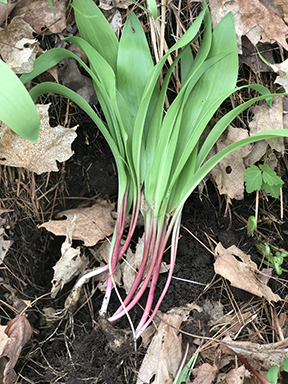 broad, thin bright green leaves that measure 1 – 2 ½ inches wide and 4-8 inches in length. Stems measure 1-3 inches and are pinkish red. Residing shallowly under the soil is a small, white bulb.
broad, thin bright green leaves that measure 1 – 2 ½ inches wide and 4-8 inches in length. Stems measure 1-3 inches and are pinkish red. Residing shallowly under the soil is a small, white bulb.
Ramps can sometimes be mistaken for the poisonous, Lily-of-the-Valley. The leaves of the two plants are nearly identical. However, the difference is made clear during bloom. The Lily-of-the-Valley has small, white bell-like flowers the run the length of a short stalk. Ramp blossoms are small, white clusters at the end of a tall stalk. If you have a harder time distinguishing one from the other break off a small piece of leaf and smell. Ramps give off a strong garlic/onion aroma comparable to fresh garden chives. Even when undisturbed their odorous scent can be detected by those with a keen nose.
Ramps can be found in higher elevation deciduous forests. They prefer rich, moist soil of low-lying areas, but not swampy conditions. The same habitat where you will find those beautiful wildflowers mentioned above. The ramp patch I harvest from is located on a gradual north-east facing hillside (sorry, the location will be kept a secret). Ramps are prevalent from Canada, New England and down into Appalachia, even as far west as Missouri.
Harvest
Ramp season is short, running from late April to mid/late June. In the Adirondacks, shoots emerge in mid-April and you can begin harvesting smaller ramps at the beginning of May. As the season progresses the white bulbs (similar to a scallion/green onion) will get larger, storing energy for the next season. By summer the forest canopy has reduce the ramp’s ability to photosynthesize; leaves turn yellow and wilted and mature plants will leave a stalk and pods containing about a dozen BB-sized seeds.
|
The entire Like any wild edible their supply is limited. You should practice sustainable harvests and only take 10-15 percent of the population. Only harvest what you plan to use. To store, take off the papery skin from the bulb, rise off any remain dirt off with cold water and trim the roots. Harvested whole, ramps will keep for several days wrapped in moist paper towel left inside a plastic bag (green vegetable bags are best) and refrigerated. Harvested tops should be used immediately. Culinary Use Ramps are very nutritious and contain high amounts of Like many from the allium family, ramps have an intense flavor, but are a quite versatile cooking ingredient. They can be used in any dish to replace green onions, chives or garlic. Ramps can be grilled or stir fried whole, roasted or sautéed and eaten raw. Many use the bulbs which are excellent for pickling and having around all season. Check out my recipe below for wild ramp and lemon risotto. Ramps are great additions to eggs, pasta, rice, potatoes, pesto, and seafood dishes. They also make a great compound butter for toast or a grilled steak. I have even heard of people who dry the leaves, crush and mix with salt and use to rim a glass for a “feral martini” that also utilizes the pickled ramps and juice. Sounds fancy. I think I will stick to my humble, albeit labor-intensive, ramp risotto. Go Try Them! If you are new to the wild edible scene – ramps are a great place to start. They are healthy, easy to identify and an ingredient you can use in numerous dishes. I hope I have “ramped up” your appetite for this spring vegetable (sorry couldn’t help it). Remember to harvest sustainably so others can enjoy and have fun foraging and relishing nature’s many bounties! |
|
||||

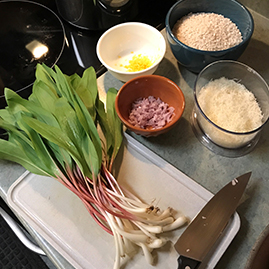
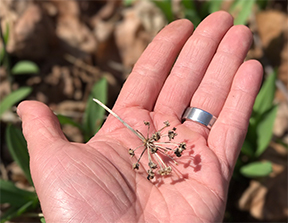 plant is edible, even the seeds. I prefer to harvest only the green tops, leaving the bulbs in the ground to repopulate. I do so once or twice during the season. If harvesting the entire plant, don’t pull! It is best to use a pocket knife or Japanese hori hori tool to loosen the soil around the plant base and carefully break the roots grip from the earth. Be patient, they should come out easy and bunched together. This method will keep the leaves, stem and bulb intact.
plant is edible, even the seeds. I prefer to harvest only the green tops, leaving the bulbs in the ground to repopulate. I do so once or twice during the season. If harvesting the entire plant, don’t pull! It is best to use a pocket knife or Japanese hori hori tool to loosen the soil around the plant base and carefully break the roots grip from the earth. Be patient, they should come out easy and bunched together. This method will keep the leaves, stem and bulb intact.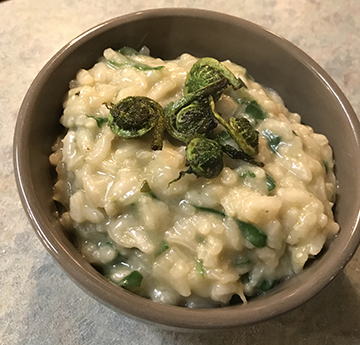 vitamin A and C. Historically, ramps were used by early settlers to create a restorative tonic used to treat scurvy after the long winter months. Today, they remain a highly-prized and sought-after spring delicacy by many chefs and foodies. In some co-ops and organic food markets fresh ramps can cost you as much $15.00 a pound. Why pay that much for something you can harvest for free from a local forest!
vitamin A and C. Historically, ramps were used by early settlers to create a restorative tonic used to treat scurvy after the long winter months. Today, they remain a highly-prized and sought-after spring delicacy by many chefs and foodies. In some co-ops and organic food markets fresh ramps can cost you as much $15.00 a pound. Why pay that much for something you can harvest for free from a local forest!